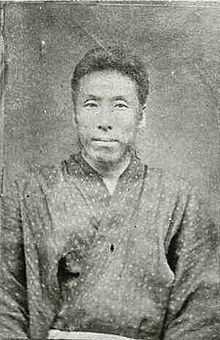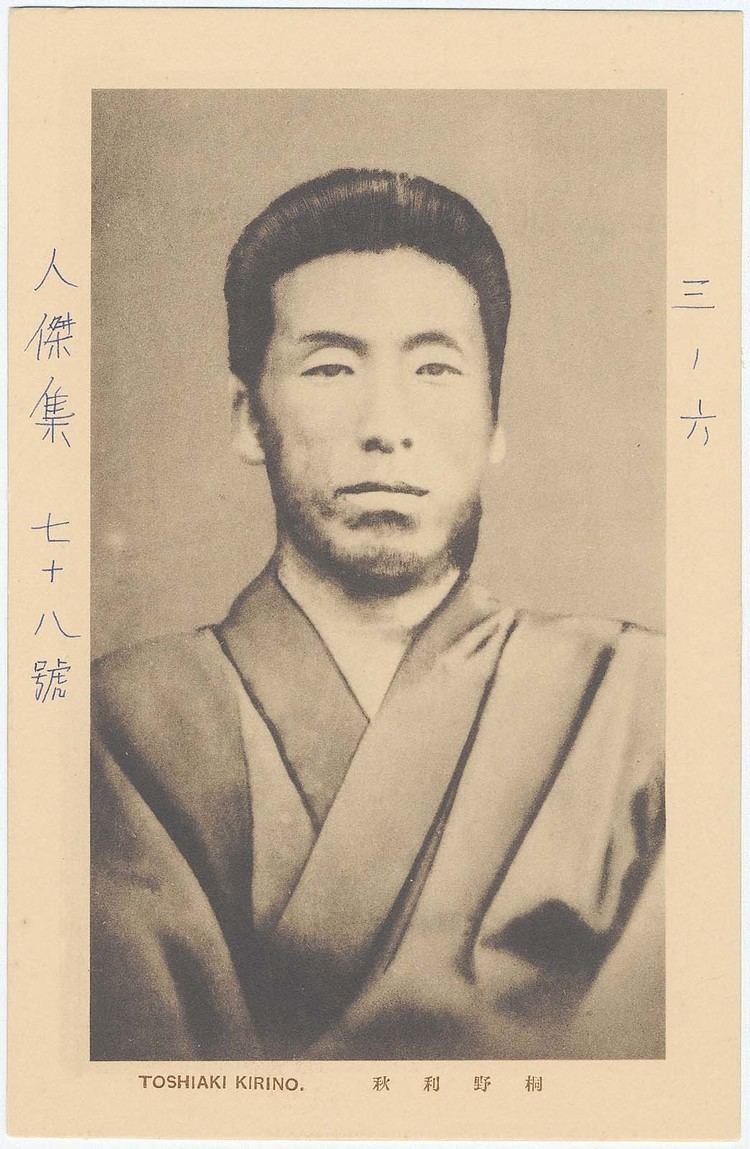Years of service 1868-1876 Rank Major general | Name Kirino Toshiaki | |
 | ||
Nickname(s) Hitokiri Hanjiro (Hanjiro the Assassin) | ||
Born December 11, 1838 (age 38), Kagoshima, Satsuma Domain (now Kagoshima, Japan) Died September 24, 1877 (aged 38) Kagoshima, Japan Similar Kuroda Kiyotaka, Kawakami Gensai, Saigō Takamori | ||
Iai Katana Giapponese Samurai Kirino Toshiaki
Kirino Toshiaki (桐野 利秋, December 1838 – September 24, 1877) was a Japanese samurai of the late Edo period, and an Imperial Japanese Army general of the early Meiji era.
Contents

Biography
Kirino, also known as Nakamura Hanjirō (中村 半次郎), was renowned as one of the Four Hitokiri of the Bakumatsu. His sword style was Ko-jigen-ryū, a branch of the high-speed Jigen-ryū . Kirino's activities during the early to mid-1860s largely centered on Kyoto. During the Boshin War, as a senior commander of Satsuma forces, he was a high-ranking officer of the new Imperial Army. It was Kirino who was the representative of the imperial army at the surrender of Wakamatsu Castle, where he received the petition for surrender from Matsudaira Katamori, the lord of Aizu.
Kirino became a brigadier general in the early years of the Imperial Japanese Army. However, he joined the forces of Saigō Takamori during the Satsuma Rebellion, taking part in the march northward to Kumamoto. Kirino remained with Saigō until the end, and was killed at the end of the rebellion.
A lover of French Eau de Cologne, Kirino wore it even during his last battle at Shiroyama.
Kirino's wife, Hisa, was a skilled martial artist. As seen in several contemporary woodblock prints depicting the uprising, she also joined in its march. Unlike her husband, she survived, and lived until 1920.
